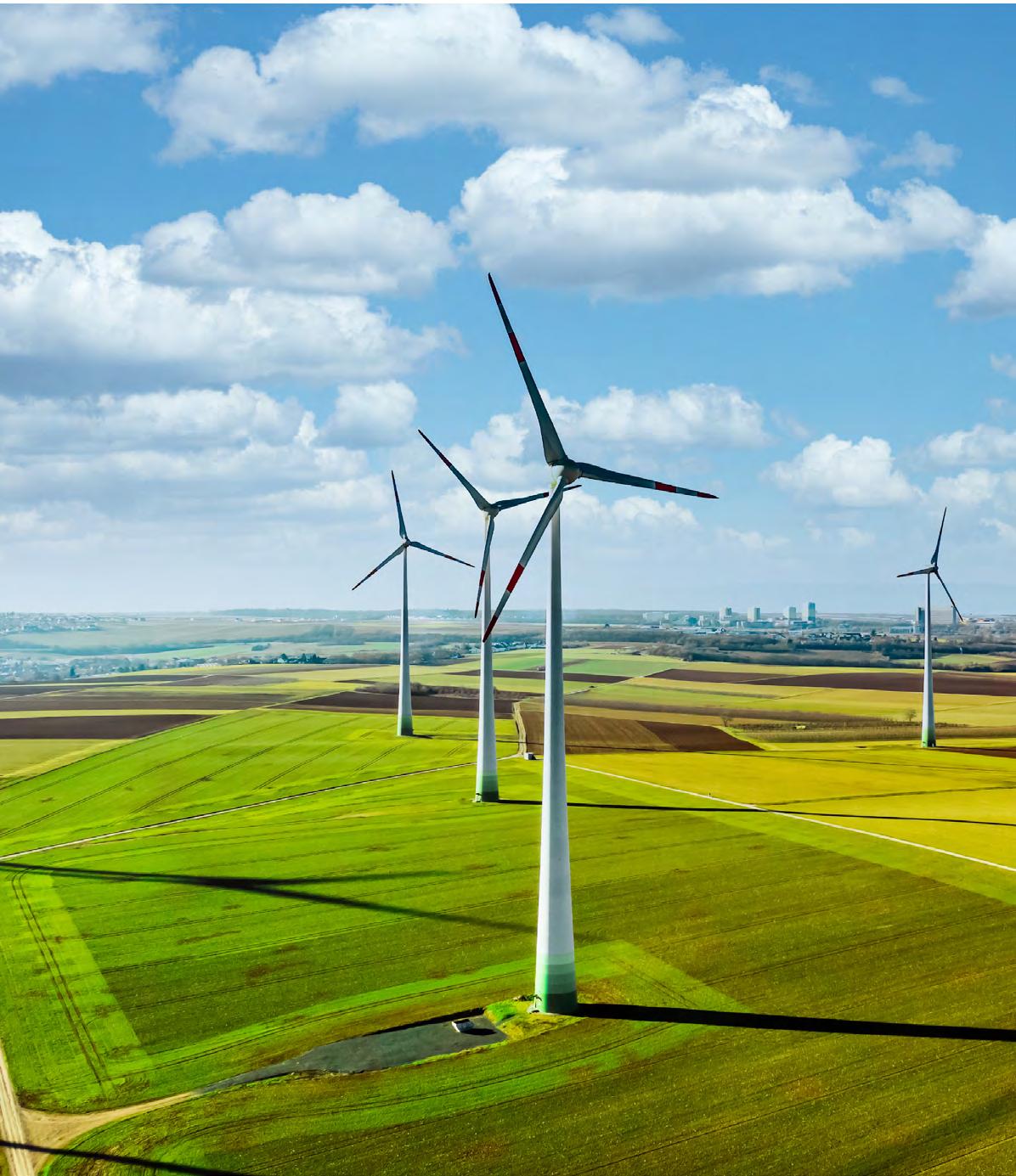
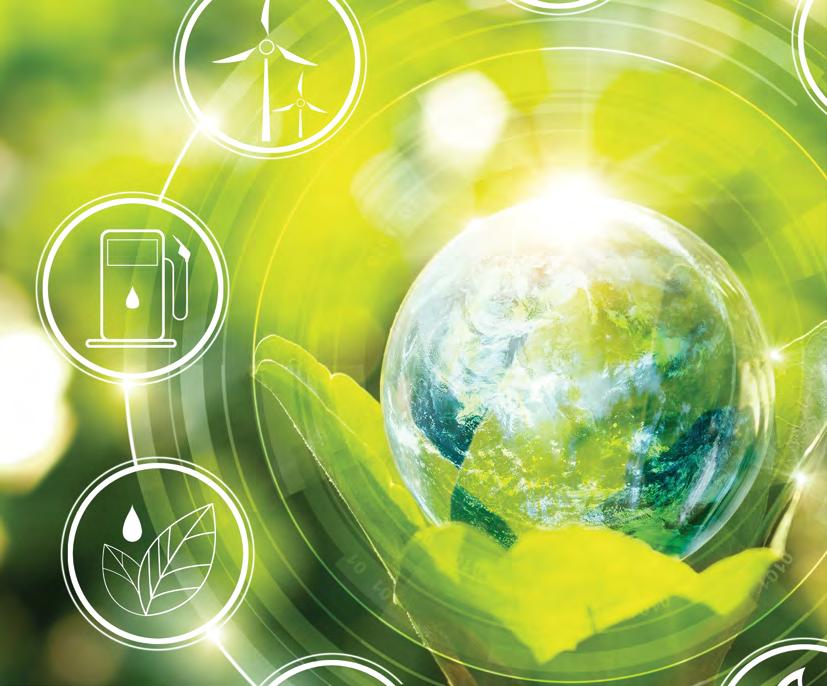
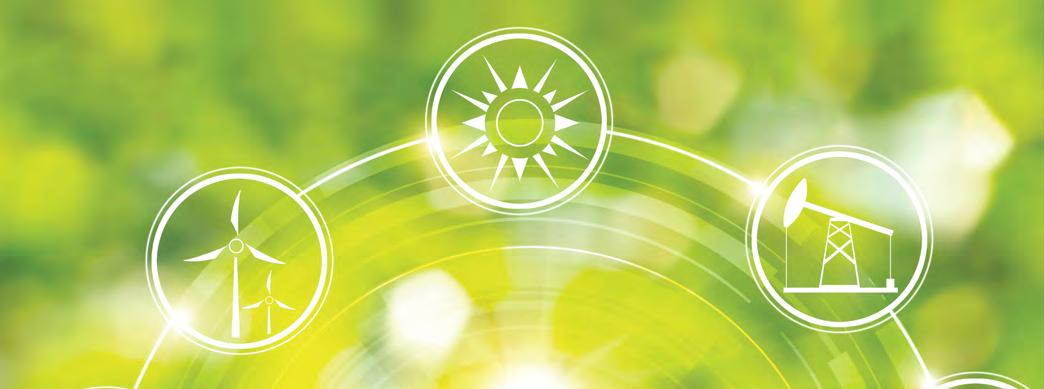
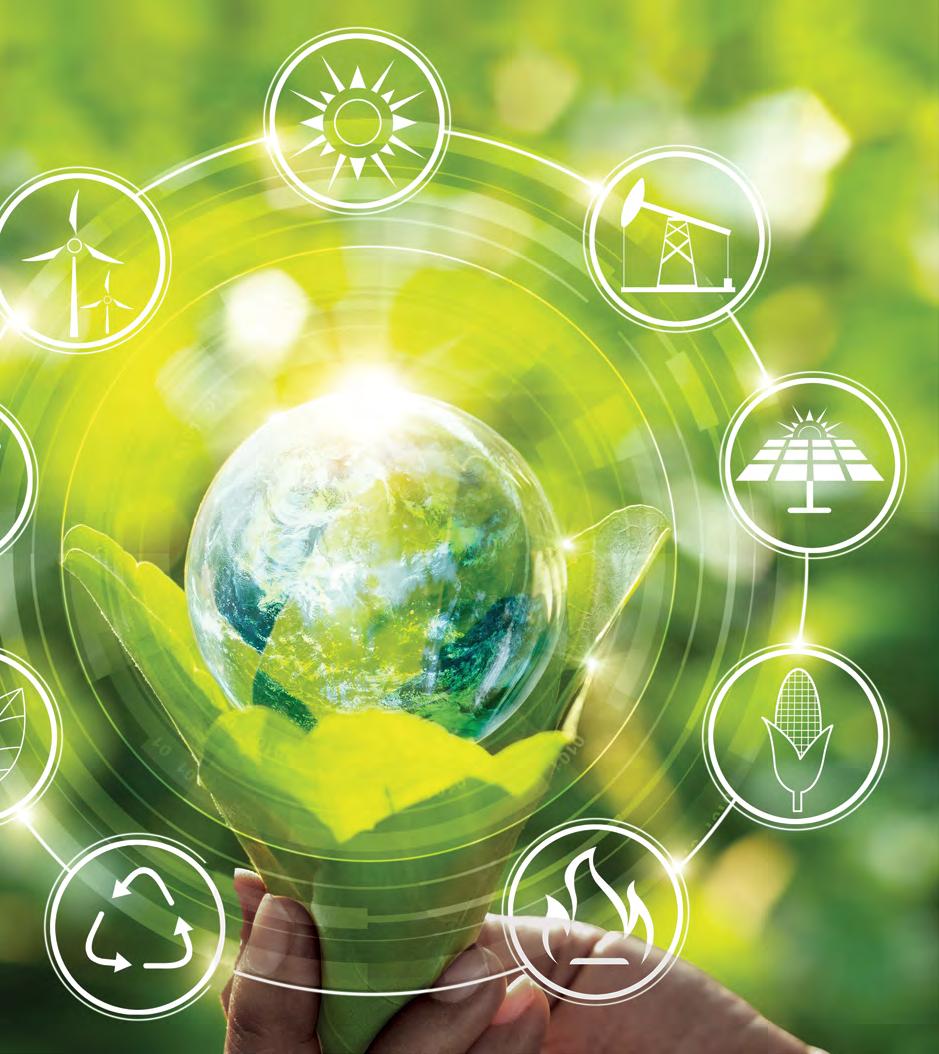

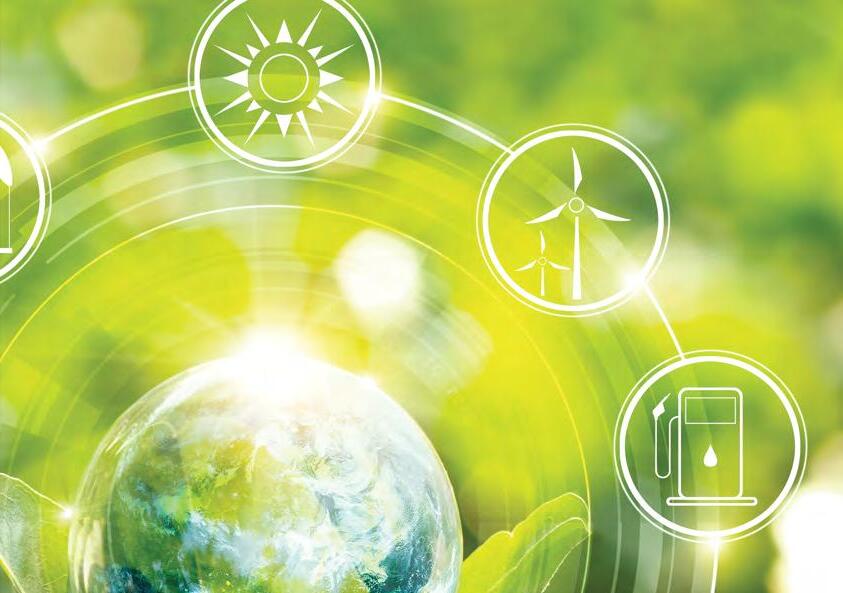
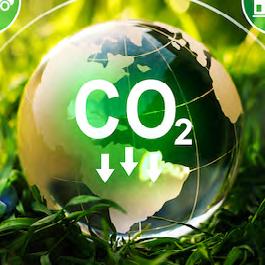

































On 8 December 2020, Minister Gwede Mantashe promulgated, under the National Energy Act, the Regulation for the Mandatory Display and Submission of Energy Performance Certificates. Applicable to privately owned commercial buildings with a net floor area of 2000m2 or more, and buildings owned, operated or occupied by an organ of state with a net floor area of 1000m2 or more, the regulation allowed building owners and accounting officers two years to achieve compliance.
Energy performance certificates (EPCs) are valid for five years and failure to publicly display them is an offence that carries a penalty of up to R5 million, imprisonment of up to five years or both.

EPCs are issued by inspection bodies that have been accredited by the South African National Accreditation System (SANAS) in accordance with SANS 1544:2014. The first inspection body received accreditation in November 2021; by December 2022 there were 14 inspection bodies with 29 technical signatories
SANEDI plays an enabling role in the EPC process, in that it is responsible for maintaining the National Building Energy Performance Register that stores the particulars of all valid building energy performance certificates. The register was developed during 2021 and accounting officers and building owners are obliged to submit a certified copy of their energy performance certificate to SANEDI.
During 2022 there was exponential growth in the number of EPCs issued in view of the looming 7 December deadline. 2021 saw only 20 EPCs issued; by the end of 2022 the number had ballooned to 1 085. Of these, 85% were issued to private buildings and 15% to buildings owned and/or occupied by state entities.

On 25 November 2022, Minister Mantashe amended the regulation to extend the deadline for the display and submission of energy performance certificates to 7 December 2025, giving accounting officers and building owners an additional three years to comply.
A highlight of 2022 was the capacity-building and awareness workshops that DMRE conducted across the country in partnership with SANEDI, GIZ and NBi. Over a period of seven months, 480 people learned more about the EPC regulation and its application, as well as the employment opportunities that exist for emerging energy services companies (ESCos) in terms of data collection and analysis.
The EPC roadshow ran from May to December 2022 and reached a variety of institutions in the private and public sectors. Approximately 28% of the attendees were women. Future EPC roadshows will target more women, young people and people with disabilities.
Energy performance certificates may not deliver direct energy savings, but they are an important tool in the quest to establish a national energy-efficiency culture.


EPCs are a tool to achieve the goals and targets contained in the National Energy Efficiency Strategy by improving the per-square-metre energy consumption in buildings occupied by the public sector and in lettable or inhabited floor space in the commercial sector.
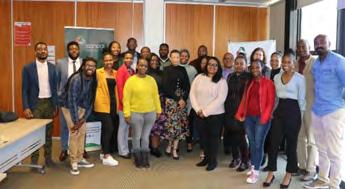

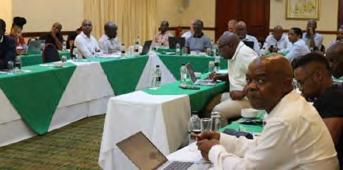


EPCs do not directly drive energy savings. However, because they are used to monitor and track building energy performance, they promote an energyefficiency culture across the industry. In addition, by using the reliable data from EPCs already issued, building owners can implement energy-efficiency measures that result in energy savings and reduced greenhouse gas emissions.

FIGURE
scale that is used to determine and indicate the energy performance of a building consists of seven grades of performance, with A the most energy efficient and G the least. Grade D is the best practice for energy performance in buildings according to SANS 1544:2014.

Energy service companies are essential to the development of largescale, demand-side energy efficiency in this country. SANEDI believes that a Super ESCo is the key to unlocking this potential.
The South African economy is highly energy intensive due to its historic focus on extractives, abundant coal supplies and efforts to keep energy prices low. Consequently, there was little incentive for commercial, public, industrial or residential consumers to invest in energy efficiency (EE) interventions or to change their energy-use behaviour. This was compounded by a generally low awareness about the opportunities for EE and the limited availability of targeted financial products.
Despite the recent strengthening of EE drivers, such as positive policy changes and above-inflation energy price increases, EE has not reached the scale and scope needed to meaningfully reduce GHG emissions and decouple economic growth from energy use. Energy-demand reduction is also not being used effectively to address the current electricity supply crisis.
Strengthening the existing energy service company (ESCo) market in South Africa, coupled with improved EE financing, can help unlock large-scale demand-side EE.

The existing, technically competent ESCo sector in South Africa was initially stimulated by Eskom’s Integrated Demand Management (IDM) programme that was established in 2004. However, the IDM programme is now substantially smaller than it was at its peak and had failed to develop a self-sustainable and robust ESCo sector due to its dependence on subsidies. At present, the only external market-activity drivers are the 12L Tax Incentive scheme and building energy performance certificates.
Despite this, the ESCo market certainly exists and remains important. While it has adapted to the reduced Eskom IDM support and other energy sector changes, the market is still at an early stage and is waiting for a business accelerator.
The sector is characterised by a significant number of small firms and a handful of world-class larger ones. Of the 131 companies listed in the 2022 SANEDI ESCo Register, 36 provide a full ESCo offering, namely energy services and financing. Most of the others offer broader energy management services, including solar PV installations. As no aggregate turnover data is available, it is difficult to quantify the actual ESCo market size (excluding non-EE activities) and trends.

The sector is generally well governed with different entities playing different roles in the market. These include the Department of Mineral Resources and Energy (DMRE), SANEDI, Eskom and the Southern African Energy Efficiency Confederation (SAEEC) and its constituted associations, such as the ESCo Association of South Africa (EASA), the Black Energy Professionals Association (BEPA) and the Measurement and Verification Community of South Africa (MVCSA).
These institutions have implemented ESCo market development activities that present a solid foundation for expansion and growth. The best-established activities include well-designed measurement and verification (M&V) protocols and functional entities such as SANEDI and the National Cleaner Production Centre of South Africa (NCPC-SA) that provide capacity building, industrial energy audits and technical support. The SANEDI ESCo Register also provides market credibility and quality control.
Market components that are missing or only partially established include standardised contractual documents, a well-resourced ESCo association and tailored financing.
To further develop the ESCo market, an enabling ecosystem is needed that includes access to financing, as well as mechanisms that actively create demand for ESCo services to develop a self-reinforcing cycle. In contrast to previous interventions, market support needs to be sustained and consistent.


The results of a local market situational analysis suggest that the ESCo market needs:
• Active marketing of the ESCo concept and industry lobbying to support business development and sales, and create market demand.
• Increased confidence in the ESCo market through continuous capacity building, standardisation and robust accreditation.
• Support for EASA to become more active and prominent.
• Enhancements to the SANEDI ESCo Register to make it more responsive to the needs of ESCos, clients, public authorities and other stakeholders.
International experience and the local market review indicate that institutional interventions or long-term programmes that change the operational approach of financial institutions (FI) yield better results than short-term subsidy or incentive-driven programmes. Consequently, two financial mechanisms, a Super ESCo and a dedicated EE debt fund, are proposed to address market barriers and to create catalytic and multiplier impacts. It is noted, however, that these do not exclude other interventions, including certain shorter-term financial mechanisms.
The Super ESCo leverages the advantages of both guaranteed savings (GS) and shared savings (SS) contracts, while avoiding their main disadvantages. The task of procuring finance is the responsibility of the Super ESCo, thus freeing both clients and ESCos of this burden; in fact, the essence of the Super ESCo arrangement is that the responsibility of seeking finance falls on a third party, which is the Super ESCo.
A Super ESCo acts differently to a fund or credit line. The latter limits its activity to a financial role by acting as a lender with technical expertise. In contrast, the Super ESCo takes on the operational role of delivering EE by acting as a contractual party in an energy performance contract (EPC). In other words, the Super ESCo takes on the operational role of delivering EE, while a fund or credit line limits its activity to a financial role.
South Africa has many ESCos able to perform a wide number of activities and master several technologies. However, among these Tier-1 companies – as they are classified in the SANEDI Register – only a few are big enough to act as integrators of complex projects that entail implementing and guaranteeing a diversity of EE measures, such as lighting, HVAC, pumps and motors.
As a first step, the Super ESCo can facilitate the creation of new ESCos through capacity building workshops aimed at enabling small companies to diversify and new companies to operate as ESCos much more rapidly.
Technical assistance (TA) and due diligence can also be channelled through the Super ESCo when smaller ESCos conduct investment-grade audits (IGAs) and prepare feasibility reports. TA can furthermore include project integration, M&V and project implementation best practices. Partnerships between large and small companies for the purposes of tendering will be viewed favourably, while aggregating smaller ESCos could lead to new, larger
ESCos capable of bidding on more complex projects.
Using Etihad ESCo (135 projects in the first four years) as a reference, it can be assumed that 30 to 40 or more projects could be implemented per year within a short time. This means that, even with some ESCos being awarded several bids, there is room for more very large ESCos in South Africa.

ESCo aggregation, dimensional growth and improved public sector experience are all positive elements that will flow toward the private sector courtesy of a Super ESCo. Once the ESCo market matures, the Super ESCo will develop its own internal ESCo ratings, quality controls and standards and the capacity to guide government policy to create a more sophisticated ESCo market. It will also provide feedback to SANEDI and support improvements to the ESCo Register.
Assuming adequate government support, the Super ESCo approach can help tackle public and private sector obstacles that currently hinder the growth of a domestic ESCo sector.
The knowledge that SANEDI’s ESCo team gained in 2022 with the support of the World Bank must be further digested and disseminated through the local ESCo market and its stakeholders, including financing institutions and commercial banks. An appropriate financing mechanism, such as the proposed revolving fund, must be studied and understood by all participants, including government. This is the challenge to be addressed in 2023.




Due to their sheer numbers in South Africa, streetlights and television sets are energy-efficiency low-hanging fruit that can be harvested with the right standards and labelling.
Since its inception in 2015, South Africa’s Energy Efficiency Appliance Standards and Labelling Programme has worked tirelessly to encourage less efficient or change-resistant developers in the sector to comply with energy-efficiency standards to maintain their opportunities in the market. In an electricity-crisis riddled economy, this approach is an easy avenue for government to manage the energy consumed by electrical equipment.

Totalling 750 000 kilometres, South Africa’s road network is the longest in Africa and the 10th longest globally. Recognising the energy-saving potential of streetlighting,
both the Department of Mineral Resources and Energy and Eskom have implemented programmes to retrofit more efficient lighting luminaires into existing infrastructure. Subsidies to support municipalities have certainly facilitated the technology transition, but despite the successes old technology is still considered in procurement processes because no minimum energy performance standards (MEPS) exist to rule out energy-guzzling options. This, together with procurement being based on upfront product costs instead of including the cost of electricity over the lifetime of the luminaires, makes a compelling case for regulation in this area.
In paving the way for the adoption of MEPS for streetlighting, SANEDI and the Collaborative Labelling and Standards Programme (CLASP NGO) funded an investigation into the market risk impacts that regulation could have.

The assessment considered three scenarios. The first scenario, or baseline, explores continuing with business as usual, which means that municipalities can choose to adopt energy-efficiency technologies. Implementation of the DMRE’s Energy Efficiency Demand Side Management (EEDSM) Programme will, as a result, remain voluntary and inconsistent.
The second scenario, known as MEPS, entails the development and mandatory implementation of technical energy performance standards to take effect at the earliest possible time. As this scenario forces new streetlighting luminaires to be efficient, full energy efficiency product penetration in a relatively short period is anticipated.
The third and final scenario, phased-in MEPS, introduces energy performance regulation through a transition period of three to five years. Thereafter MEPS become mandatory and regulated. During the transition period, extensive
awareness creation will grow the number of municipalities participating in the DMRE’s EEDSM Programme. The risk to this approach is that legislation could be obsolete by the time mandatory regulation comes into force.
The cost-benefit analysis clearly recommends scenario 2. MEPS will provide a regulatory tool for government to accelerate the adoption of efficient streetlighting by municipalities, which are the country’s largest procurers. This will deliver electricity savings, particularly during peak demand periods of early evening in winter; cost savings for the national and local fiscus; a 35% reduction in GHG emissions by year 10; and simplify procurement of streetlighting for local municipalities.
In the words of CLASP and SANEDI-appointed research lead and South African lighting specialist Mr Bjorn SmidtHart, “Furthermore, MEPS would promote standardisation and product development towards more energy efficient and quality performing streetlighting luminaire products for import, local manufacture or supply, and procurement. It would further promote efficient and compliant lighting installations that improve public safety with reduced environmental impact.”
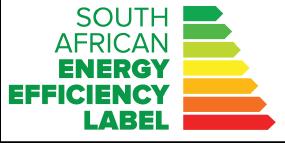
An energy rating for televisions informs consumers of the most energy efficient product on the market. Green or A-rated appliances realise maximum energy savings and associated benefits.

Source: EE Standards and Labelling Programme
Another opportunity not to be missed is MEPS for televisions. Research on residential electricity consumption in South Africa conducted in 2021 shows that 92% of households have one television; 36% have two or more. Around 60% of households use their TVs for more than four hours a day. The number of televisions owned is projected to grow to approximately 28.4 million units by 2032, directly increasing the energy use from televisions.
Furthermore, as the size and definition of television screens increase, so does power consumption. Today, a high-definition tuner and screen will require more power than a standard-definition screen and tuner of the same size, irrespective of the signal being processed. A recent study on the subject estimated that by 2021, about 1.23TWh more energy would be used by televisions compared to 2017.
If MEPS are adopted, cumulative energy savings of approximately 2.6TWh could be realised by 2030. Over the same period, CO2 emissions in South Africa can be reduced by about 1.97 megatons.
It is envisaged that MEPS and labelling for televisions will be enforced through the DMRE-SANEDI partnership with the South African Bureau of Standards and the National Regulator for Compulsory Specifications during the 2023/24 fiscal year.
MEPS and energy labelling are among the most effective policy tools to promote energy efficiency in electrical appliances. Standards improve the energy performance of appliances manufactured and imported into South Africa, while an energy-efficiency label guides consumers’ buying choices.
Within the context of the ongoing electricity supply crisis, and South Africa’s international commitments to reducing GHG emissions, introducing MEPS for streetlighting and televisions is an opportunity not to be missed.
• Reduced electricity demand and, ultimately, grid load.
• Increased financial savings as LEDs require less maintenance and have a longer lifespan, giving ample time for a return on the higher capital investment.
• Reduced emissions of greenhouse gases and other pollutants.
• Improved energy security that will reduce energy poverty.
• Greater grid stability as energyefficient streetlighting supports related opportunities such as smart grids, distributed generation, increased renewable energy integration, minimising costs of peak generation, deferring high investments in infrastructure and slowing climate change.
An example of the more efficient LED streetlight

Source: uksfbooknews.com
References: Hughes, A and Larmour, R, (2021) Residential Electricity Consumption in South Africa, p.23
The 12L tax incentives programme was established in 2013. Ten years later, the 300 projects completed under its auspices have saved 27 652GWh of electricity and avoided 27 megatons of direct CO2 emissions.

The 12L tax incentives programme encourages businesses to implement energy efficiency savings by allowing a tax deduction of 95c/kWh saved on energy consumption. The incentive was promulgated on 1 November 2013 and is claimable until December 2025. It allows for all energy carriers, except renewable energy, which can be claimed under the 12B tax incentive.

Companies that want to claim a 12L allowance, have to
measure their energy consumption in kWh equivalent over a period of 12 months. The results of this implementation/ assessment period are then compared to 12 months of baseline measurement. Both the baseline measurement and savings are measured and verified by a measurement and verification (M&V) professional assigned by a SANASaccredited M&V body. There are currently eleven SANASaccredited M&V bodies whose contact details are available on the SANEDI website.
According to the 12L tax incentives regulation, SANEDI is responsible to:
• Appoint suitably qualified persons to consider the reports submitted.

• Consider, keep and maintain all reports submitted by taxpayers claiming the allowance.
• Issue taxpayers with certificates containing the relevant information.
• Create and maintain a database of all issued certificates.
• Provide the Minister and the SARS Commissioner with access to the reports and to the 12L Tax Incentives database.
Before issuing an energy-savings certificate, SANEDI must be satisfied that the information contained in the application reports is accurate and:
• Complies with the South African National Standard “SANS 50010:2018: Measurement and Verification of Energy Savings” as published by the South African Bureau of Standards (SAB) Standard Division;
• Is an accurate reflection of the energy-efficiency savings for which the taxpayer is claiming a deduction during the year of assessment; and
• Complies with the 12L Tax Incentives regulation.
Over the past ten years, SANEDI has worked hard to streamline the tax incentive process and ensure exceptional delivery of this offer to the market, thereby supporting, promoting and accelerating the uptake of energy-efficiency measures in the country. We believe we’ve made significant strides in this regard but will continue to refine our processes and systems to best facilitate this instrument of government.
By 31 December 2022, which marks the end of the third quarter of the 2022/23 financial year, the 12L tax incentives programme achieved the milestone of 300 completed and certified projects since its inception.
From these projects, which were claimed by 117
companies, the combined energy savings totalled 27 652 GWh, translating to 27 megatons of direct CO2 avoided emissions. A combined 13% of the savings, equal to 3 627GWh, came from grid-tied projects. This is a significant contribution to demand-side management in support of the constrained electricity grid.
The 12L tax incentive has made a significant contribution to South African businesses. The total tax claim of R22.6 billion has unlocked investments in energyefficiency interventions from which the participating companies will continue to benefit for years to come, while the advantages of improved energy productivity will accrue to the broader economy.


The South African government has committed to reducing carbon emissions to between 398 to 614 Mt CO2-eq by 2030 through its national determined contribution (NDC). The NDC is the cornerstone of South Africa’s climate change response.
The 12L tax incentives programme is one of the measures through which the carbon emission reduction targets will be achieved. The programme encourages businesses to invest in energy-efficient technology and this has the potential to:
• Reduce the energy intensity of the economy.

• Reduce carbon emissions.
• Reduce production costs and increase profits for businesses through energy savings.
• Increase business competitiveness.
• Help the country to achieve its NDC towards climate change.
Far from impeding international trade, energy efficiency standards and labelling are needed to advance Africa’s energy transition on all fronts.
The annual public forum of the World Trade Organisation (WTO) is the world’s biggest platform for discussions on progress in world trade. It also provides an opportunity for the tabling of proposals to improve the multilateral trading system. The 2022 forum was held in October with Towards a sustainable and inclusive recovery as theme.
CLASP nominated a panellist each from India and South Africa to share the emerging market experience and perspective on barriers to trade for energy-efficient appliances and equipment. The topic was both interesting and relevant, given that original equipment manufacturers can experience
minimum energy performance standards (MEPS) and the methods of enforcing them, notably tariffs and levies, as a challenge to the free flow of goods in growing international markets such as South Africa, and the African continent at large.

A significant percentage of the appliances sold in South Africa are manufactured in Europe and Asia. In addition to the sustainability objectives that can be achieved through the implementation of energy efficiency policies, emerging markets need to recognise the importance of policy instruments that protect local markets by encouraging

Source: www.wto.org
localisation and preventing technology dumping in countries that are already vulnerable from an energy-security point of view. Such dumping often happens in African countries that tolerate electrical equipment that may be banned in countries that have regulations against inefficient technologies.
A recent example of dumping involved shipping containers filled with what could be viewed as a lifetime supply of compact fluorescent lamps (CFLs). While the most energyefficient option many years ago, CFLs have long since been eclipsed by more efficient LED lighting. How long will it take

South Africa to recover from an influx of CFLs that have legally entered the market and will be in circulation for years before they can be replaced by more efficient alternatives?
For African economies to match first-world agility when it comes to evolving with global technology advancements, a proactive approach to adopting MEPS is needed to protect local industries and the public.
The crippling effect of rolling blackouts is putting South Africa’s economic vulnerability on public display. Limiting trade opportunities in favour of the most efficient electricity

consuming technologies is no longer a choice but a necessity. Given South Africa’s status as the port of entry for much of the trade with and between African nations, it is crucial that the Department of Mineral Resources and Energy’s national programme for energy efficiency appliance standards and labelling is strengthened and expanded to cover as many product categories as possible. Other African countries are developing MEPS too, which is crucial as an act of due diligence.
The African Continental Free Trade Area (AfCFTA) unifies 55 countries and eight regional economic communities (RECs) to create the world’s biggest free-trade area. The overall mandate of the AfCFTA is to create a single continental market in support of the African Union’s long-term

development strategy for transforming the continent into a global powerhouse.
In the context of AfCFTA, the benefits of scrapping a host of tariffs to allow free movement of commodities and services across the continent are many and varied. They include economic growth, poverty alleviation and the formalising of informal trade practices to enable formal job creation and the empowerment of informal entrepreneurs.
Removing up to 90% of tariffs may work well for certain products and services, but there is a case to be made that electronics are the exception, in the interest of protecting local industries and customers, and advancing Africa’s energy transition and long-term energy security.

KEY TAKE AWAYS FROM THE WTO SESSION ON ADVANCING PRODUCT ENERGY EFFICIENCY AND SUSTAINABILITY WHILE MITIGATING TRADE BARRIERS:


• Local testing standards need to be standardised.
• Advanced regulatory impact assessments will enable the anticipation of technological advancement and reduce the risk of new technologies being introduced in outdated policy landscapes.
• Simplified energy efficiency labelling requirements will reduce cost and compliance burdens and encourage the industry to increase efficiencies.


SANEDI’s cool roofs pilot project in Limpopo, implemented in collaboration with the SANDF, is a game changer on a multitude of levels.
At two of the South African National Defence Force’s four military bases in Limpopo, SANEDI is coating roofs with cool-paint technology in a pilot project that simultaneously explores the technology and raises awareness. The body of knowledge that is being built, will be used by SANEDI to present a strong business case for the widespread adoption of cool-roof paints that will improve overall energy efficiency in South Africa and result in electricity and cost savings.
Local people have been co-opted on the project to help gather data. One such person is 25-year-old Hilda Muthivhi. No stranger to the scorching temperatures of her home province, Muthivhi knows the impact of cool-roof paint technology extends beyond energy savings. “Where I grew up, children in school became sick during summer when it was very hot. This paint will keep our buildings cooler when it gets too hot in Limpopo. Usually, people in Makhado and Musina cannot stay and work indoors in summer; with this paint, they can.”
Muthivhi is responsible for noting and documenting how different roof materials respond to the paint, and how surfaces must be prepared to ensure the lasting integrity of the paint. “We record, document and monitor everything that team members like Hilda report so that we can build a business case,” says Dr Karen Surridge, acting general manager at SANEDI. “When we started there were only two manufacturers of these paints. Now there are seven, which creates opportunities and a need for more skills. Ideally, we would like to see more women coming into this space because it is a robust technology that is easy to apply, and the benefits are enormous.”
For every square metre painted, Surridge and her team can quantify the annual electricity and cost savings. Coolroof paint delivers higher solar reflectance and higher thermal emittance than standard building envelope coats, making cooling accessible to people who do not have access to conventional air conditioning. A cool coating
immediately reduces temperatures on the surface by up to 20°C, keeping heat expansion and cooling contraction to a minimum and thus extending the lifetime of the roof. The paint also strengthens the structural integrity of the roof and, importantly, reduces indoor temperatures by up to 10°C by reflecting heat away from the roof, which reduces the absorption and penetration of solar radiation into the building.

Not surprisingly, teachers and staff at the military base school and creche are reporting positive changes in the children’s health and focus since their classrooms are cooler in summer.
“The military base is an ideal pilot to test whether we can create a cool bubble effect, which is essentially what
happens when surfaces are cooled in a cluster of closely-knit buildings. This net cooling effect reverses the heat-island effect associated with urban heating,” explains Surridge. In addition, cool-roof paint acts as a fire retardant, giving people inside a burning building time to escape. It also protects roofs from the elements and can seal asbestos effectively where it has not been removed.
Muthivhi is aware of the market potential of cool-roof paint technology and has set her sights on her own business in the near future. “We are approached by a lot of curious people who want to know how they can access the paint for their buildings or houses, so I can see the interest is there,” she says. “One day my own company could provide this service beyond Limpopo. I hope through this field I can build people, encouraging unity and development around me.”

During the past 12 months, a SANEDI study has proven that nano-technology in paint can make life much better in even the humblest dwellings, while helping South Africa achieve its energy-saving goals.
If ever there was an energy-saving programme that ordinary South Africans can get behind, it’s the Cool Surfaces Project that started as an initiative of the Clean Energy Ministerial, under the auspices of the USA Department of Energy. In 2013, the then South African Department of Energy (represented by SANEDI) joined the Global Superior Energy Programme (together with India, Japan, Korea, Mexico and the USA) to create the Cool Roofs and Pavements Working Group. SANEDI partnered with the Global Cool Cities Alliance (GCCA) who provided technical support to establish the Cool Surfaces Programme in South Africa.
The Cool Surfaces Project is a response to South Africa’s need for an energy-passive, low-cost and low-maintenance cooling technology for buildings. In very simple terms, it means painting walls and roofs with coatings that keep buildings cool inside so that the people living and working in them need less – or even no – air conditioning to be comfortable.


Given how hot South African summers can be, cooling and air conditioning are major consumers of electricity and, as a consequence, major contributors to greenhouse gas emissions.
The Cool Surfaces Project kept SANEDI busy in the past financial year. In order to enable a sustainable passive-energy cool-coating market, we looked at the entire industry value chain to identify key drivers, challenges and opportunities.
Based on this holistic perspective, we drafted the Cool Surfaces Roadmap that sets out nine deliverables:
1. Select available products from the global market.
2. Adopt and publish South African national standards for product performance testing.
3. Pilot projects for proof-of-concept efficacy.
4. Run demonstration and large-scale projects.
5. Collect and analyse data to make recommendations for improvement.
6. Establish skills training and education.
7. Establish an industry association to participate in building materials regulation.
8. Do energy-efficiency building benchmarking and simulation modelling.
9. Establish a SANEDI cool surfaces lab within a building envelope for product performance testing.
In addition to charting a way forward, SANEDI addressed three challenges that could potentially hamper the implementation of cool-surfaces technology.
CHALLENGE: SANEDI research indicates that cool reflective surfaces products are excellent at cooling the interior of buildings in summer but do not assist with heat retention in winter. This is of particular relevance in low-income communities where the buildings are poorly constructed with insufficient protection against heat loss. Although excessive heat is an issue for most of the year, extreme cold
causes more deaths as South Africans are less prepared for and, therefore, less resilient against cold.

REMEDIATION: SANEDI piloted a project using thermal insulation to passively warm the interiors of buildings to counter poor design and materials.

CHALLENGE: The established and trusted insulation industry became concerned that nano-technology cool coatings would compete with thermal-control materials for market share in the built environment. The sense of competition was exacerbated when it was suggested that the building code should accommodate cool reflective surfaces by reducing the minimum thickness requirements for thermal insulation. SANEDI protested that this offset measure was ill advised.
REMEDIATION: SANEDI collaborated with TIPSASA in a joint experiment to prove its claim that insulation and cool surfaces would work better together. The project was implemented in Masonwabe informal settlement in Gugulethu in the Western Cape.

SANEDI cool-coated 14 000 square metres of walls and roofs of dwellings built with wooden frames and corrugated sheet metal. TIPSASA member companies, Eco-Insulation and IsoBoard, sponsored the insulation of 16 houses. The number of manufacturers that could participate was limited by the lack of ceilings in the houses. Three types of reference houses were set aside, namely, houses with neither cool coating nor insulation, houses with only cool reflective coating, and houses with both insulation and cool reflective coating. Measuring equipment was installed with dataloggers, manual collection of data was done every three months (one last set of data collection remains), and anecdotal evidence was collected via surveys.
The preliminary findings are confirming and exceeding our expectations. As expected, the evidence shows that insulation is best at heating buildings and cool reflective coatings are best at cooling them. Together, the two technologies regulate thermal comfort more effectively than either on its own. While the cost of heating an insulated building in winter remains the same whether or not it has a cool roof, it is three to nine times more expensive to use insulation for cooling than it is to apply a cool reflective coating. In fact, the energy savings from the triple insulation thickness needed for cooling will take 17 years to offset the investment. By using the two technologies together, energy savings are doubled as energy demand is reduced throughout the year. Finally, not only does poor ventilation (sealed and too few windows) not reduce heat loss in winter, but it adds to heat gain in summer.
Extrapolated from the current sample size, the potential impact on a 26m2 sized home with an average occupancy of four people are as follows, bearing in mind that very few informal-settlement residents use heating and cooling electrical appliances:

• Winter savings per household: 55.8kW/h = 9.3kW/h per month (R122,76 saved).
• Summer savings per household: 31.8kW/h = 5.3kW/h per month (R69,96 saved).
• Winter ambient temperature: average = 120C, but inside uninsulated house as low as 30C.
• Summer ambient temperature: average = 34.50C, but inside uncoated house as high as 41.10C.
*GHG emissions to be calculated by end of June 2023.
CHALLENGE: Urban settlements more readily absorb and accumulate heat, creating an umbrella of heat above cities. Large-scale cool roof projects were expected to cool interiors and ambient air temperatures alike; however, while indoor temperatures indeed came down by up to 10°C, there was very little impact on ambient temperature due to the network
of blacktop asphalt roads that crisscross our urban landscape.
REMEDIATION: SANEDI will pilot a cool roads and pavements project to counteract the warming impact of the tar and concrete hardscape. This will assist in benchmarking a global standard for cool paving.

• Improved maintenance of building envelopes, especially roofs and walls.
• Cleaning of dust build-up on roof surfaces.
• Protection against corrosion, rain and UV damage.
• Passive-energy cooling of most building types without the need for generated electricity, leading to reduced energy consumption for cooling appliances and H-VAC systems.
• Fire-retardation of between 30 minutes and two hours, depending on the dry-depth thickness of the paint application. This allows time to extinguish fires and stop them from spreading, especially in informal settlements, which saves lives and prevent property losses.



• Improved thermal comfort and productivity of occupants in un-air-conditioned structures immediately after application. Reduces the cooling demand on top floors by up to 20%.
• Greater resiliency to extreme heat events and climate change. Studies indicate a cooling potential of between 2°C and 4°C over cities, keeping us well within the thermal budget for global warming mitigation.
• Reduced peak-load demand reduces electricity consumption and the concomitant greenhouse gas emissions from coal-fired power stations.
• Improved air quality increases health benefits for urban populations.
• Protects the health of especially the elderly, the sick and infants who are most vulnerable to extreme heat.
• Lowers the ambient air temperature of the country, allowing us to continue using coal until sufficient sustainable alternative energy technologies are available.
Every 100 square metres of cool roofing offset the heating impact of 0.6 tons of CO2 emissions per year. Over its lifespan, the roof offsets the warming effect of 24 gigatons of CO2 – equivalent to taking 500 mediumsized power stations offline for 20 years.





A solar water-heating installation at the air force base in Hoedspruit has demonstrated improved energy efficiency, cut costs and CO2 emissions, and left personnel with new skills.
A remarkable success story has played out at the Hoedspruit Air Force Base over the past three-and-a-half years with solar technology at its heart.
On 1 May 2019, SANEDI and the South African National Defence Force (SANDF) collaboratively commissioned two 1 500-litre solar water-heating systems to keep the bungalows that are home to the base’s personnel supplied with hot water. The Solar Thermal Demonstration and Training Initiative (SOLTRAIN) contributed training and 30% of the capital required.
Since then, SANEDI and the SANDF have tracked the performance of the system, specifically focusing on electricity and cost savings and translating these into tons of CO2 emissions avoided. The numbers are nothing short of impressive – and inspirational.
While all involved expected significant cost and electricity savings, no one predicted just how quickly these would be realised. In just over two years, the installation had saved enough in electricity costs to cover the capex of the hardware and associated services. The 770 000kWh that the system had saved by March 2023, translates into a cost saving of R1.7 million and 180 tons of CO2 that had not been released into the atmosphere. The two installations are functioning at a solar fraction of 96.8%.
The project’s other success story goes beyond statistics and involves the 107 SANDF artisans that have acquired skills in and knowledge of solar thermal technologies. The training aspect of this collaborative project ensures
that the Defence Force does not become reliant on civil society to maintain the hardware at its bases. It also equips artisans with skills that are in step with changes in the energy landscape and advances in technology, and paves the way for other government entities to instal renewableenergy technologies at a large scale at their facilities.
Having the necessary skills available, has already led the SANDF to invest in a domestic solar water-heating installation at another of its air force bases to address severe water challenges.
Considering the combined advantages of reduced electricity consumption and costs, artisan upskilling and CO2 emission
reductions, this project has proven to be a good all-round solar-thermal solution to integrate previously unutilised technology into a government department that strives to be self-sufficient. Not only did the project introduce solar-thermal technology benefits and sustainability, it also catalysed an unusual sequence of events serving the industry, the sector and government.
Performance data is proving the technology’s value and ability to deliver a return on investment. More importantly, though, the project made such a powerful case for technology acceptance, skills and capacity development and investment potential, that the SANDF has become an investor in the solar-thermal sector in South Africa.

SOLTRAIN presented a variety of training sessions to introduce renewable energy to the SANDF and upskill military artisans to maintain solar water-heating in-house:
• Thermosyphon system introductory training.
• Mini apprenticeship.
• Quality inspector.
• System calibration and servicing.
• Specialised training for solar-thermal experts and professionals.
As futuristic as it may sound, green hydrogen is here already and poised to change our energy landscape for the better.
Green hydrogen production is touted as an important future alternative fuel globally. Fully implemented, it could meet up to 12 percent of final energy consumption by 2050, according to the International Renewable Energy Agency’s World Energy Transitions Outlook report.

Green hydrogen presents enormous economic opportunities for developing and emerging markets, such as South Africa, whose bountiful supply of minerals and renewable energy resource positions it to maximise the array of opportunities this fairly new sector offers.
For this reason, SANEDI has collaborated with the Deutsche Gesellschaft für Internationale Zusammenarbeit GmbH (GIZ) and the Renewables Academy (RENAC) to launch a series of webinars and workshops to capacitate and inform interested parties on the status of green hydrogen worldwide and opportunities for domestic development.
Hosted between March and November 2022, the webinar series contributed to a broad understanding of and dialogue on critical aspects of the hydrogen sector. Separated into three clusters of topics, the webinars have

focused on strategy development and regulatory frameworks (cluster 1); private sector participation and the green hydrogen economy (cluster 2); and environmental and social affairs related to the development of the sector (cluster 3). The latter included discussions on the role of green hydrogen in realising a just energy transition in South Africa, Eskom’s plans for green hydrogen in relation to its carbon footprint, and the socioeconomic context and impacts of a green hydrogen economy and renewables in South Africa.
Wendy Poulton, founder of Strategic Mindsets, who spoke about how South Africa can become globally competitive in green hydrogen by developing an ecosystem of skills, is an example of the calibre of guests who participated in the webinars.
During March 2023, SANEDI hosted a number of site visits to expose stakeholders to green hydrogen in action. Included were the Saldanha Bay Industrial Development Zone earmarked for green hydrogen fuel exports, Mogalakwena in the Waterberg District of Limpopo where green hydrogen is set to fuel the vehicles used for diamond, copper, titanium and platinum mining, and Johannesburg to showcase, among others, ethylene production with green hydrogen.
According to Dr Karen Surridge, acting general manager at SANEDI, the green hydrogen webinar and event series aligns with the National Hydrogen Roadmap, which highlights the importance of putting in place sector planning to provide transparency on future off-take and encourage technology partnerships between suppliers and clients.



Limescale build up is bad news for geysers, but a SANEDI project in Limpopo could be the key to a solution that protects appliances and make households more energy efficient.
The SANDF’s air force base in Makhado, Limpopo, is the site of an energy-efficiency pilot project aimed at helping households cope with the impact of limescale build up. The project falls under the auspices of a five-year partnership between SANEDI and the military that involves ongoing research to quantify energy, cost and emissions savings through energy-efficient and renewable-energy interventions.
Limescale build up in water-heating systems raises the cost of heating by significantly reducing energy efficiency. It also shortens the lifetime of the geyser or kettle. “A geyser that should last for five years, gives out after 18 months or less,” says Dr Karen Surridge, acting general manager at SANEDI. “Given that parts of Limpopo are notorious for so-called ‘hard water’ – water that has a high mineral content - the SANDF are helping us build a business case for solar technology in high limescale water areas.”
The project kicked off with the installation of 50 indirect high-pressure solar water-heating systems. Seven artisan soldiers were trained to install and maintain this technology that specifically deals with limescale risks to household water-heating systems. An ordinary direct solar water-heating system will calcify with limescale just like an electrical geyser would. Indirect systems work by heating a water-glycol mix (similar to anti-freeze in a vehicle) which runs alongside the normal water and heats it for use. The project compares high-pressure solar heating systems to instantaneous water heating and heat pumps – all of which are more energy efficient than the traditional electrical geyser.
In hot climates like Limpopo, solar water heaters can reach much higher temperatures than what the thermostat of a conventional geyser will allow, meaning that households use less hot water. Using less water more efficiently is critical for people around the Limpopo River basin and other areas most at risk to water insecurity due to climate change.

SANEDI has previously quantified the energy-cost savings from a similar project at a different military base in Limpopo, albeit at a larger scale. The data indicated a return on investment in under three years, accompanied by significant savings in cost, electricity and emissions.

According to Surridge, the Makhado project is the first time that the indirect heating technology is tested, at domestic scale, in an area where hard water is such a severe problem. “We are looking forward to seeing the results. Proving that sustainable and efficient energy technologies are fit for purpose is vital in the energy-constrained environment in which South Africa finds itself.”
While solar water-heating systems store heat for long periods, they do come with back up to ensure hot water is available even during several days without sunshine. The technology cannot deliver results on its own, though. People have to adjust their lifestyles by, for example, using hot water sparingly in the evening to ensure that there is enough hot water in the morning before the sun comes up. “But the benefits, including grid stability, outweigh any inconvenience,” Surridge says. “We are continually making our partners in the military, public, commercial and industrial sectors aware of energy-efficient behaviour as much as of the technology.”
The sector development plan for micro-digesters is positioning the technology to contribute greatly to a green circular economy through education, upskilling and job creation.
In early 2020, SANEDI commissioned the University of Johannesburg’s Process, Energy and Environmental Technology Station (UJ PEETS) to take stock of the status of micro-digesters in South Africa and of the technology locally and globally.

Between July 2020 and March 2022, UJ PEETS, together with the DSI/NRF/Newton Fund Trilateral Research Chair in Transformative Innovation, the Fourth Industrial Revolution and Sustainable Development (UJ-TRCTI), carried out research that included 11 stakeholder engagements and an in-depth desk review of academic and industry literature. UJ PEETS also did a fieldwork review of the status of microdigesters in Gauteng, Limpopo and KwaZulu-Natal that had been installed over the previous five years with SANEDI funding.
The research furthermore drew on inputs from the Southern African Biogas Association (SABIA) and the microdigester working group, as well as UJ PEETS’ and SANEDI’s partnerships with the Gauteng Department of Infrastructure Development, the University of Venda in Limpopo and the University of KwaZulu-Natal. The ongoing work to create
a national waste-to-energy roadmap was also taken into account.
The project culminated in the development of a sector development plan (SDP) that outlines three pathways open to the micro-digester sector in South Africa to ensure growth and sustainability by 2030:
1. Increase uptake of micro-digester technology in rural areas.
2. Pilot micro-digester use in urban areas, especially in gardens, food establishments and small housing developments.
3. Implement cross-cutting actions to create a supportive enabling environment relating to skills and training, financing, regulation and policy.
The SDP contributes to the Department of Mineral Resources and Energy’s 2019 Integrated Resource Plan, which recognises biomass and biogas as energy sources that can support a just energy transition, including through job creation. It also contributes to the National Development Plan 2030 and the need to move South Africa towards lowcarbon and clean energy sources.
If the SDP pathways are progressed, South Africa stands to significantly reduce rural energy poverty and urban organic waste to landfill, while boosting employment and business opportunities.
The size of the sector is estimated to be 21 000 units initially; the maximum annual demand is a potential 54 000 units. Based on this annual market size, it could create at least 17 000 jobs and divert 150 MW of electricity per day from less clean and green energy sources, including firewood and charcoal.
The SDP focuses on expanding an existing micro-digester market in rural areas by persuading households to stop using firewood for cooking. However, micro-digesters are a multi-modal solution, providing not just cleaner cooking fuel, but also an organic-waste solution and fertiliser for farming and gardening.
As such they have huge potential for urban environments – a market in which micro-digesters had not been promoted up to now. The solution is particularly pertinent for metropolitan municipalities that are introducing organic-waste-to-landfill regulations, such as the City of Cape Town.
Micro-digesters have traditionally been promoted as an owner-operated venture. However, the research that

informed the SDP revealed substantial operating and maintenance challenges. The plan therefore promotes the creation of organisations (community based or private company) that will operate and maintain micro-digesters. In addition to creating jobs, these organisations can upskill significant numbers of young people and women who are currently excluded from the workforce.
In addressing the funding obstacle that has long prevented the development of the micro-digester sector, the SDP outlines actions required regarding business model, marketing and organisational innovation, as well as policy innovation to create facilitatory processes and systems. The latter includes working with government agencies to introduce grants for urban-farming collectives, food establishments and property developers to purchase micro-digesters, and the design of schemes to finance operating and maintenance costs. In all instances, the intention is to create demand and stimulate the market to obviate the need for donor or government funding.
Following a validation workshop in March 2022, the SDP was launched in April last year. The SDP management committee continues to review implementation progress against the plan’s monitoring and evaluation framework.

Two SANDF military bases on the outskirts of Makhado are taking “green soldiering” to the next level by replacing fossil-fuel electricity in their kitchens with energy generated from food waste.
The 220 people working and living at the Air Force Base (AFB) Makhado on the outskirts of Makhado (formerly Louis Trichardt) in northern Limpopo and the 523 Electronic Warfare Squadron base in the town, are part of a new energy order every time they sit down for a meal.
At both military bases, a biogas plant was installed during 2022 to turn kitchen food waste that is normally sent to landfill into biogas. The plants, which reached full production by early 2023, reduce the amount of coal-fired electricity used in the AFB kitchen and virtually eliminate the use of liquid petroleum gas (LPG) in the 523 one.
The biogas project is one of several waste recycling and energy saving programmes being undertaken by the SANDF in partnership with SANEDI. The Department of Defence (DoD) and the SANDF want to reduce energyusage costs, while ensuring that military bases have energy security in a constrained energy system. The biogas project is also aligned with the SANDF’s green soldiering
concept under which strong environmental protection measures are being introduced in its operations.
AFB Makhado prepares daily meals for about 200 people, while around 20 are provided for at 523 Electronic Warfare Squadron every day. The decision to pilot biogas in one small and one large kitchen was partly made to demonstrate that these plants can be tailored to specific needs and provide a wide range of solutions. The kitchens, particularly the one at AFB Makhado, produce large quantities of food waste that is normally sent to landfill. The biogas system fits in perfectly with the DoD’s aim to dispose of waste responsibly. In the process, AFB Makhado stands to save an estimated R250 000 in electricity costs over the 20-year lifetime of the plant.
The biogas plants consist of large, sealed anaerobic digesters in which waste material is decomposed to produce methane gas. These were installed underground at the bases to make them unobtrusive and to prevent

any unpleasant smells in the air around them. Kitchen waste aside, the biogas digesters process other waste materials such as cow dung that is sourced from surrounding areas to ensure that the digesters enjoy a “well-balanced diet”. In addition to gas for cooking, the digesters produce an organic
by-product, called the digestate, that the bases will use as organic fertiliser in ornamental-plant beds, generating further savings.
SANEDI managed the biogas installations and trained personnel in the maintenance of the plants.
Biogas is the result of the natural biological decomposition of organic material in the absence of oxygen. It is generated in enclosed, sealed anaerobic digesters that are fed with waste material ranging from human and animal excreta and manure, to municipal sewage sludge, biodegradable food and agricultural crop residues.

The methane gas released during the process can be used to drive turbines to generate electricity, as a gas in household, commercial and industrial applications, and to power vehicles.
The digestate, or by-product, produced during the process makes an excellent organic fertiliser.
Biogas is arguable the most difficult form of renewable energy to install and operate. Daily maintenance is essential, making the process labour intensive. Once installed, a biogas system can take up to six months to start producing gas optimally. The initial process is like feeding a baby: small quantities of waste material must be added regularly.
The gas cannot be stored or bottled but must be used soon after it is produced and before it dissipates.



European funding is being put to good use in five municipalities to improve citizens’ quality of life while advancing energy security in South Africa.
The Department of Science and Innovation (DSI) has received European funding to plan, design and implement the Viability and Validation of Innovation for Service Delivery (VVISD) programme with stakeholders including the DSI, the Technology Innovation Agency (TIA), CoGTA and SALGA.
Having been appointed as the overall programme manager by DSI, the TIA selected SANEDI to implement the programme’s energy management component. In
addition to energy management, the VVISD programme has four other sub-programmes: innovative technology solutions, decision-support tools, innovation capacity and capability, and integration of innovation.

The DSI put out a call to municipalities to submit energy proposals that could improve their service delivery. Five municipalities succeeded in securing funding for their proposals, namely City of Cape Town, Drakenstein, Mbombela, Rustenburg and uMhlathuzi.
The City of Cape Town has two proposals. The first focuses on free basic alternative energy (FBAE), which is a subsidy in the form of a monthly coupon issued to informal dwellings that households can use to buy LPG or a basic solar home system (SHS) for lighting and cellphone charging. The second involves a geyser tag that improves energy management, water conservation and demand management.
Drakenstein’s project wants to improve revenue management through accurate billing, a more effective revenue collection process and prompt consumer payments, with long-term sustainability as ultimate outcome. This will be achieved with the installation of smart meters.
Mbombela aims to address strategic renewable energy issues and alternative fuel sources. This entails investigating and implementing appropriate and relevant renewable technologies.


Rustenburg proposed two energy-management projects aimed at controlling and reducing electricity consumption. The first is the installation of geyser-control devises to reduce household consumption, while the second involves public lighting load-control technology.


There is also the intention to install electricity distribution fault and protection devices such as passage indicators, distance-to-fault estimators, feeder automation, insulated conductors and SCADA.
uMhlathuzi is planning to increase the number of CCTV cameras installed in Richards Bay, Empangeni, Esikhaleni, Vulindlela, Enseleni, Mzingazi and other areas. This will improve security of citizens while generating data for planning purposes.

Since being contracted by TIA in October 2022, SANEDI has conducted initial innovation and technology requirement analyses in all five participating municipalities and shared a draft memorandum of agreement with them. An internal municipal stakeholder forum has been established in two of the partnering municipalities, while similar work will be done in the rest. SANEDI has also drafted the terms of reference for the working group and project steering committees, thus preparing the groundwork for progress in the upcoming financial year.
SANEDI is proud to contribute to service delivery by using its technical capacity to advance the planning, development and implementation of energy-management solutions in partnership with municipalities.
The VVISD programme wants to support the South African government to improve the NSI and respond to priorities of the NDP. It furthermore aims to develop policy and programme interventions through dialogue and consultations with non-conventional partners and government stakeholders. The goal is to stimulate investment in RDI for service delivery that will improve the socioeconomic position of especially women, young people and vulnerable groups. Finally, the VVISD programme wants to support learning from models that have successfully applied innovation and commercialisation of technologies arising from existing cooperation and other projects.
The programme is expected to deliver a variety of benefits:
• Improve municipal service delivery by investigating and implementing energy management innovations and technologies in partnership with the municipalities.


• Advance the Presidential District Model of empowering communities at local level.
• Promote training and development of citizens through stakeholder engagement and, potentially, provide temporary employment opportunities.
Mobile, scalable technology that can turn a variety of waste products into energy and help clean up landfill sites while potentially create income for communities sounds like science fiction. Thankfully, it’s not.
NECSA and SANEDI have developed a mobile plasma gasification technology system that treats green waste and produces electricity as part of the process. Initially designed for organic waste only, the system has since been improved to treat a range of biomass waste types, which may include surrogate Covid PPE waste.
A particularly useful feature is that the system is mobile and can be placed on sites where it is need, obviating the need to transport waste to a fixed waste site. The system was not initially designed to be hauled to sites, but instead for the components to be transported and assembled on arrival. Work is currently underway to make the unit more robust for purposes of travelling.
The technology as it stands can treat between 0.2 and 0.5 tons of waste per day, although the system can be scaled, and produce between 10kW and 25kW of off-grid electricity. The energy can be sold into the municipal grid or used as auxiliary power.
The diversion of green waste from landfills has a significant benefit since the decomposition of such materials releases methane, a greenhouse gas (GHG) whose a global warming potential is 21 times more than that of carbon dioxide. GHGs contribute significantly to climate change, the foremost global environmental challenge. Landfill sites also have, in most instances, limited space and contribute to ground and air pollution.
In the months ahead, a roadshow will be conducted at municipal sites across the country to raise awareness and test how the technology might be received. The unit will also be branded. The next step will be a feasibility study to determine whether the technology can produce hydrogen.
The plasma gasification initiative supports South Africa’s ambition to become a world leader in producing hydrogen for local use and export to global markets.

• Support SANEDI’s strategic objectives of addressing climate change and the country’s global climate change obligations and targets by reducing methane production in landfill sites, along with other toxic leachates seeping into surface and subsurface soil and water resources.
• Contribute to the just energy transition strategic objectives with the potential of empowering women and young people through establishing community cooperatives that can potentially earn an income by bringing waste to drop-off sites.
• Technically assess the current plasma gasification system with a view to improve functional capability, material robustness and presentability.


• Demonstrate the technology, while training and developing operators at local municipal sites.
• Conduct a feasibility study with respect to the potential to produce hydrogen through gasification in support of the national strategy to become a global hydrogen producer and exporter.


Communities for whom grid electricity remain an unattainable dream, can now look forward to a visit from an empowered – and empowering – turtle.
The Solar Turtle is a micro solar-energy kiosk, designed to provide an alternative energy source to rural and highdensity urban communities that are off the electricity grid. The system is aimed at empowering informal traders and entrepreneurs across Africa, specifically women and young people, to generate an income though serving their communities.
There are three Solar Turtle designs, each with an integrated SME e-learning and ICT management system. The smallest version fits in a suitcase and can be transported in a taxi. The medium version can be pulled or peddled by bicycle to trading locations, while the large version is a trailer that
can be parked at events. The baby Turtles allow community members to charge cellphones and small electronic devices, while the bicycle and trailer versions offer a wider range of products and services, including printing, cooking and refrigeration.
Apart from the electricity-supply hardware, all Baby Turtles have an ICT training and management package. The software facilitates daily trading through a point-of-sale (POS) system that keeps track of customer accounts, sales, stock and cash flow. The idea behind the POS system is to help entrepreneurs trade more effectively and keep them motivated through a virtual reward system that tracks performance statistics and

has a fun, interactive interface. Cloud-based software ensures daily data capturing that enables impact studies and serves as a support programme.

During the past financial year, SANEDI ran the project that developed, tested and, based in field assessments, to improve the three prototypes. Particular care was devoted to integrating the ICT capability with a POS system and e-learning software. A live case study was done to test the performance of the kiosks by deploying them to rural and urban nodes, where access to electricity is a challenge.
The Solar Turtle project has advanced to a stage where the trailer prototype and software updates are being finalised. The suitcase and bicycle prototypes have already been finalised. Two entrepreneurs have been trained and empowered to test the technology.

Portable and scalable, the Solar Turtle is an excellent example of African ingenuity addressing Africa’s energy challenges.

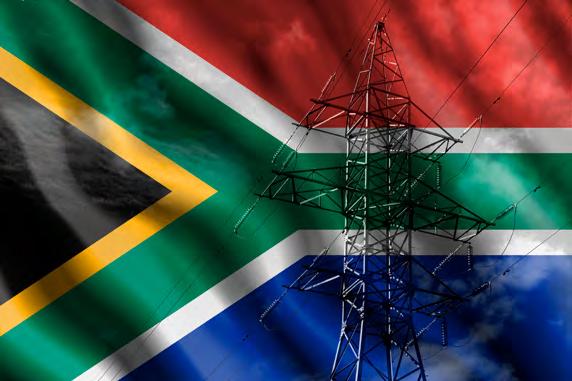


A recently completed research study yielded valuable information to bed down the practicalities of smart grid rollouts.
An enterprise service bus (ESB) is a hub that integrates different kinds of services through messaging, event handling and business performance management (SANEDI 2023).
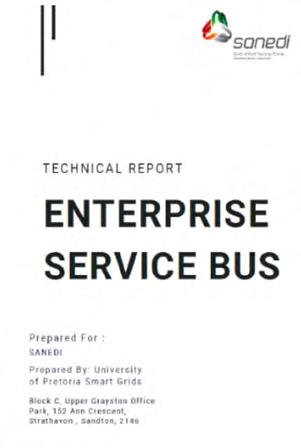
The transition from legacy to smart grid systems requires an enterprise service bus layer for efficient integration and implementation, given that smart grids bring information technology (IT) and operational technology (OT) closer together.

ESBs also provide an endpoint abstraction. This makes the transport layer more flexible, allows for loose coupling and makes it easy to connect services. The ESB makes a serviceorientated architecture more robust and flexible, resulting in a much more practical and simplified implementation of smart grid solutions.
Between August 2022 and January 2023, SANEDI conducted the Enterprise Service Bus Requirements for Smart Grids research study with the purpose of guiding the implementation of a unified ESB for smart grids application. This project helps municipalities to understand the importance of the ESB
and how it will assist their smart grid rollouts and guide them in key decisions.
The ESB models components, communication protocols and data that are necessary to realise utilities’ goals. It also offers insight into how the company currently conducts business and what adjustments are required to meet the goals of business grid modernisation.
The ESB demonstrated an implementation guide for a high-level smart meter extension (SMX) function that includes data processing and analysis to track SMX effectiveness. A noteworthy finding of the study was the significant extent to which open automated demand response (ADR) can support dynamic load management.
As a result of the research project, SANEDI can provide recommendations to help minimise smart grid implementation risks, as well as an end-to-end platform for advanced distribution management systems. This will result in robust and flexible smart grids and a future optimised grid.

The Smart Grids 2030 vision was developed in 2017 by the South African Smart Grids Initiative (SASGI) under the guidance of the Department of Mineral Resources and Energy and SANEDI. All relevant laws, policies and other indications of the national direction for the electricity supply industry were taken into account to present a unified vision of smart grids that can be realised over time and brings together efforts from every industry sector.
During 2022 it was agreed that the vision document was in need of an update, given that much has changed in the energy landscape in the five years since it was first drawn up. For example, President Cyril Ramaphosa had stated in a speech in 2019 that Eskom would be split into three divisions, namely, generation, transmission and distribution, and amendments to the Electricity Regulation Act had exempted embedded power generation projects with a capacity of up to 100MW from a generation license as of 12 August 2021.
Updating the vision was necessary to ensure its ongoing relevance to South Africa, considering the challenges the electricity supply and distribution sector faces, as well as evolving technologies in the industry.
In its updated form, the vision document:
• Summarises the local and global status of smart grid implementation.
• Helps identify technology and infrastructure gaps in South Africa.
• Highlights the progress towards achieving the Smart Grids 2030 objectives.

• Explores the potential impacts of digitalisation and virtual power plants (VPPs).
• Serves as a roadmap for smart grid asset management.
The vision document is ready to guide stakeholders in the implementation of smart grids in South Africa, and to be used as a roadmap for smart grid road technologies.

A successful transition to smart grids is only possible if the vision that guides their implementation remains relevant.
Seven students are pursuing post-graduate qualifications with SANEDI bursaries that honour an industry contributor.
SANEDI, through the University of Pretoria, has awarded seven bursaries to post-graduate students in electrical engineering who require financial support to obtain their qualifications.
The Dr Minseh Bipath Memorial Bursary Scheme, which honours the late general manager of Applied Energy Research, Development and Innovation at SANEDI, was created to develop vital smart grids skills. Focused as it is on post-graduate students, the scheme stimulates research to improve efficiencies across South African utilities.

Awarding bursaries encourages students to pursue qualifications within the science, technology, engineering and mathematics (STEM) fields and contributes to the body of knowledge in the arena of smart grids and electrical engineering. The electricity supply and distribution industry require capacity development in academia, hence SANEDI’s focus on high-end professional studies.


The smart grids laboratory at the University of Pretoria advances expertise in the field to the next level.
In collaboration with the University of Pretoria, the SANEDI Smart Grids Programme has developed a smart grids laboratory that is based at the university’s Hatfield campus.
As the South African electricity grid evolves into smarter grids in response to technological advancements, there is a need to address the challenges that face the industry. The aim of the laboratory is to stimulate research into the various aspects of smart grids and drive their implementation on the African continent. Ultimately, the laboratory wants to contribute to making smart grids easier to execute.

A fully functional smart grids laboratory that is a testing platform for technologies reduces the risk of field malfunctions, while introducing post-graduate studies to smart grid equipment and testing. The lab enhances students’ theoretical studies by giving them the opportunity to work on engineering projects that are often industry sponsored. Students gain practical experience while achieving academic goals ranging from final-year projects and independent studies to master’s and PhD theses.
In addition to the appropriate hardware and software, a cloud platform for data analysis and smart metering are fundamental components of the laboratory.
• Student training: Students use the facility for research and engineering projects purposes, enhancing the quality of their educational experience.
• Training of municipalities: As municipalities roll out smart metering projects, they need facilities where, among other services, meters can be tested. The university has already been approached by utilities such as the City of Tshwane in this regard, hence there is a proven need for services that include the training of municipal meter test engineers, especially for device language message specification (DLMS) compliance testing to the NRS049 standard.
• Improved post-graduate research: Accurate test equipment enables improved research outputs.
• Increased innovation: Readily available equipment drives innovation and the creation of products and services.
A project that addresses municipalities’ inability to manage their physical infrastructure assets is good news for citizens.
Local governments are an essential link in the value chain that delivers a diverse range of electrical services to communities. Service delivery, however, depends on physical infrastructure assets that are properly managed and maintained. Local infrastructure assets are, in fact, the foundation of communities’ social, economic, cultural and environmental success.
Sadly, most municipalities have proven themselves unequal to the task of prioritising asset management, doing asset planning for the future and connecting assets to primary municipal services.
In an attempt help alleviate the situation, SANEDI launched a project to develop a solid asset management policy, strategy, framework and governance structure that will guide municipalities to sustainability. When municipalities have better control and management of their assets, outages and downtime will be reduced.
The project, which ran from January to July 2022, researched different asset management approaches locally and internationally to identify key elements that needed to be included for smaller municipalities specifically in order to create stronger linkages to national (and local) policies and goals.
In only six months, the project delivered significant benefits:
• Asset management policy and strategic plan templates that enable municipalities to be better stewards of the electrical infrastructure they own.
• A centralised repository of smart asset management information.
• Improved identification of ghost assets in municipalities.
• Improved maintenance practices for electricity distribution assets.
• Financial and investment forecasting for electricity distribution assets.
• A better understanding at municipal level of equipment utilisation, which improves efficiency.

The post-2015 National Energy Efficiency Strategy (NEES) sets a 23% energy consumption reduction target for the residential sector. To expedite the achievement of this target, SANEDI collaborated with the Department of Mineral Resources and Energy and the University of Cape Town in a study to model the most accessible and cost-effective untapped energy saving opportunities in the residential sector. Such evidence-based research is critical to identify the most appropriate demand-side management (DSM) structure for South Africa.

The study, which ran from November 2022 to March 2023, was the second part of DMRE’s research into identifying key objectives and benefits for an integrated national demandside management programme.
The study’s objectives were to:
• Propose a DSM programme for the residential sector.
• Provide an estimation of the time-of-use (TOU) savings available through the proposed DSM measures to reduce overall electricity consumption and to shift the residential sector’s peak demand.
• Assess the potential of implementing these measures in South Africa and prioritise actions and strategies for adoption by DMRE and the NECOM Natjoint Workstream 5.
• Describe implementing strategies with the use of
examples and an assessment of incremental costs and benefits.
• Develop a database for decision making and demand forecasting.
In carrying out the study, SANEDI conducted surveys and obtained TOU data from Eskom, municipalities and relevant residential metering projects to compile a data report that served as input to various scenarios in the LEAP model.
The study’s modelling phase considered the statistical generation of normal and energy efficiency (EE) demand profiles for selected end-uses, calibrated disaggregation of the national residential sector demand profile by income group, season and day type, integrated time-sliced results into the LEAP model and determined the likely EEDSM impacts under various scenarios.
The proposed DSM programme can deliver a variety of benefits. Among the most important is reduced demand during peak periods, which will contribute meaningfully to alleviating the ongoing electricity crisis. Households will enjoy lower electricity bills as behaviour changes and EE technology take effect, while the just energy transition and job creation will be supported. The DSM programme will furthermore contribute to South Africa achieving the post2015 NEES and national determined contribution (NDC) targets, and produce data for researchers, students and government entities.




Water and wastewater infrastructure account for about 17% of a municipality’s energy consumption, making it an ideal focus for energy efficiency gains.

The provision of water and treatment of wastewater are service delivery cornerstones for municipalities. It cannot be simpler or more important: life is not possible without water.
Water services are also huge consumers of energy, making up around 17% of consumption at municipal level. At approximately 30%, electricity is the single biggest cost of running water and wastewater infrastructure. Given these figures, water services have significant electricity savings potential in municipal operations, with estimates indicating that energy efficiency measures can achieve savings of up to 25%.

With this in mind, National Treasury provided funding through the European Union’s fourth General Budget Support (GBS-4) programme to implement a project that would, among other outcomes, achieve net-zero energy usage by wastewater treatment plants (WWTPs) in South Africa. In so doing, the initiative will contribute to the National Development Plan (NDP) 2030, National Climate Change Response Policy (NCCR) White Paper and the National Energy Efficiency Strategy (NEES).

The project commenced in the 2019/2020 financial year with a three-phase implementation approach:

1. Preparation, involving prefeasibility studies, cost benefit analyses, environmental impact assessments and socioeconomic impacts.
2. Implementation, involving energy-demand modelling, data collection and analysis, and energy management and optimisation through the installation of energyefficient equipment.
3. Monitoring and evaluation, which will be conducted by quantifying and verifying energy savings and greenhouse gas emissions, in line with the National Greenhouse Gas Emissions Reporting Regulation of the Department of Forestry, Fisheries and Environment (DFFE).
SANEDI provides technical subject expertise and also uses the data generated by the project to meet the NEES target of a 20% reduction in energy intensity (measured as energy consumption per head of population served) in the provision of electricity-intensive municipal services. These are street lighting, traffic lights, water supply and wastewater treatment.

The project has introduced energy efficiency interventions through the retrofitting of highly efficient motors and LED lights, and the installation of variable speed drives (VSDs) at three facilities, namely, Sundumbili WWTP in the iLembe District Municipality, Kingstonvale WWTP in the City of Mbombela and Paarl WWTP in the Drakenstein Municipality. It is envisaged that the WWTPs will achieve energy savings of up to 10% as a result.



In the prefeasibility studies phase of the project, energy data had to be gathered and energy efficiency and demand side management (EEDSM) concepts developed for 14 WWTPs. To achieve this, the service provider that conducted the studies appointed 28 fieldworkers. Preference was given to African women and young people who lived at least within the participating municipalities, and preferably in the same council wards as the WWTPs.
While collating energy data on the 14 WWTPs, the plants were mapped using an online ArcGIS interface to make it easier for users to locate them. The mapping includes energy data in terms of annual consumption in kW and voltage data for the existing equipment.
Training plays a pivotal role in energy efficiency initiatives as it sensitises the recipients and gives them a better understanding of the importance of energy efficiency. As part of the WWTP energy efficiency project, SANEDI and the DMRE trained at least 250 delegates from municipalities, state-owned entities (SOEs) and national departments on topics such as data collection and analysis, the fundamentals of energy efficiency, and savings opportunities in WWTPs and public buildings. Energy performance of buildings was the best-attended module. Delegates received CPD points from the Engineering Council of South Africa (ECSA) for attending.


• Optimise operational processes that will reduce energy consumption. Examples are operating ASP reactors at the required DO levels, operate PST optimally to divert as much CPD as possible to the anaerobic digesters, operate RAS sumps at a higher level without compromising proportionate TAS extraction from each clarifier, and avoid throttling valves on pump delivery lines by running the pumps for shorter periods without compromising the process.
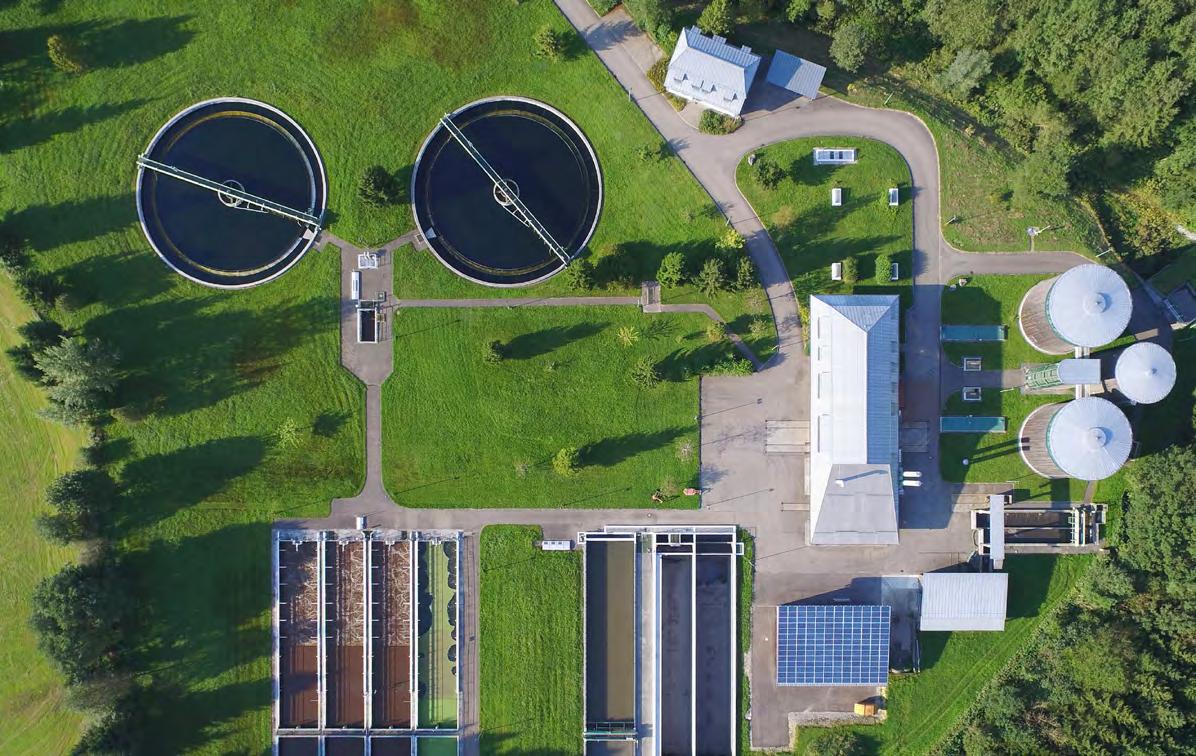
• Install more LED lights, and replace failing air-conditioning units with energy-efficient units and failing geysers with solar geysers or heat pumps.
• Install check meters on the Eskom meters, record the readings daily and manage the data in the same manner as flow-meter readings coupled with effective data management.
• In line with international best practices, establish an energy management team that is responsible for driving the energy-related projects and for developing an energy efficiency policy statement document, both at municipal and site level.
Note that these figures are based on wastewater treatment plants under the EU GBS-4 programme and do not reflect the South African landscape.

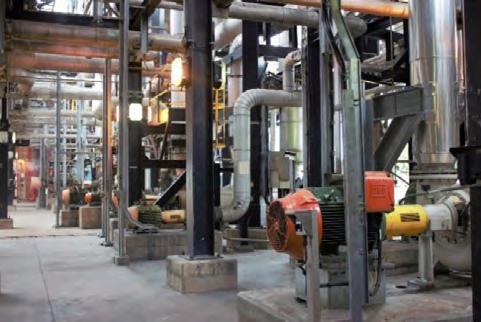
While the residential sector can flatten the peak-demand curve by changing its energy consumption patterns, industry holds the key to lowering overall grid-electricity consumption. The Industrial Energy Efficiency (IEE) project aims to achieve this outcome.

The Global Environment Facility (GEF) in the United Nations Industrial Development Organisation (UNIDO) provided funding to DMRE and SANEDI to implement phase 2 of the national IEE project, involving the Department of Trade, Industry and Competition (the dtic), the Department of Forestry, Fisheries and Environment (DFFE) and the National Cleaner Production Centre (NCPC).
Phase 2 of the project promoted IEE through further accelerating and mainstreaming the adoption of energy
management systems (EnMS), energy systems optimisation (ESO) and the ISO 50001 series of energy management systems, thus ensuring the outcomes of the IEE project are expanded and become sustainable, market-orientated activities within the national industrial landscape. This would realise increased investment in IEE through enhanced institutional frameworks and regulatory environments, technical and implementation assistance to industry, and multi-level engineer, technician and operator capacity building programmes.

SANEDI and the DMRE were tasked to carry out two components of this project, namely, data quality improvement to facilitate data-rich IEE and energy management policy implementation, and strengthening policy implementation and support frameworks for EnMS, ESO and energy management standards.
As these two components are aimed at aligning existing frameworks and activities that are a priority for the industrial sector, the focus was on two major subsectors, namely pulp and paper and automotive manufacturing, particularly original equipment manufacturers (OEMs).


The project was executed through a gap analysis, technical capacity enhancement to strengthen data collection, processing and interpretation, and

In addition, a study was done to determine the energy footprint and savings potential for the pulp and paper and automotive subsectors, along with an analysis of the existing national governance structures and legislative instruments to determine their relevance for the implementation of energy efficiency in the industrial sector.

A series of policy consultative workshops was also conducted with the DMRE, the dtic and DFFE. The International Energy Agency (IEA) participated in panel discussions during the workshops.
The project was concluded successfully, with DMRE and SANEDI completing all the tasks assigned to them.
The IEE project had the added benefit of driving gender mainstreaming in SANEDI, which further contributed to increasing young people’s participation in STEM activities. Gender mainstreaming was incorporated into project activities such as training and capacity building and procurement procedures.


Examples of SANEDIs increased participation in gendermainstreaming and youth-empowerment activities include:
• Women’s Month seminars for women in energy leadership.
• Launch of the Women Empowerment and Gender Equality Strategy that involves, among others, gender sub-committee representative for SOEs.
• Published articles and media interviews related to gender mainstreaming.

• Awareness of gender-based violence (16 days of activism).

• Surveys and questionnaires to profile women in the energy sector.



• 60% of IEE project training and bursaries benefitted women.



• Development of internal gender-mainstreaming policies.
• Sponsorship of women in energy events.
• Youth career talks.
The study concluded that the current average energy consumption (CAEC, or energy footprint) of pulp and paper mills in South Africa was 69 554 015 GJ in the 2021 calendar year. This can be reduced by between 3% and 5% (66 076 314 GJ and 67 467 395 GJ) if financially and technically feasible energy savings opportunities were implemented in the following areas:
• Energy management programmes and systems

• Steam systems
• Process optimisation
• Combined heat and power systems (CHP)
• Lighting
• Raw material preparation
• Chemical pulping, bleaching and recovery
• Mechanical pulping
• Papermaking
The study concluded that the current average energy consumption (CAEC, or energy footprint) of low-duty vehicle manufacturers in South Africa was 2 475 763 GJ in the 2021 calendar year. This can be reduced by an estimated 13% (2 163 415 GJ) if financially and technically feasible energy savings opportunities were implemented in the following areas:
• Combined heat and power (CHP)
• Use of variable speed drives (VSDs)
• Conveyor optimisation
• Lighting optimisation strategies
• Chiller optimisation
• Compressed-air supply and demand
• Steam and hot water boiler optimisation
• Welding process optimisation
• Paint reformulations and paint process change
• Curing process optimisation
• Dry versus wet scrubbing
• Pre-treatment process optimisation
• Oven modifications
• High-efficiency burners
• Heat recovery
A study is currently underway to determine the status of energy research in South Africa in the interest of fine-tuning focus and funding.
Despite its significance for science, technology, economic development and growth, energy research does not feature in many indicator investigations due to its multiand interdisciplinary nature. Monitoring and evaluating the different facets of the scientific enterprise is, however, a critical and integral part of science policy at regional, national and continental level.
The rising cost of research and development and competing disciplinary claims for financial resources require an intelligent allocation of resources, which presupposes knowledge of the activities and performance of the innovation system.
South Africa places a high priority on funding energy research as part of its growth plans. Given that indicators are one of the most effective and objective ways to evaluate the performance of research and innovation, a study commenced in March 2022 to inform relevant stakeholders of the status of energy research and innovation in the country over time and within a global perspective.
Conducted in collaboration with Enterprises University of Pretoria, the outcomes of the Energy Research and Innovation Indicators South Africa 2021 study will benefit the implementation of the Decadal Plan, which aims to substantially increase research, development and demonstration (RD&D) funding and coordinate the national system of innovation.
To meet its objective of providing information concerning the inputs, outputs and activities of energy research and innovation activities in South Africa according to the Organisation for Economic Co-operation and Development (OECD) best practice, the study will explore six topics:



1. Energy research and development expenditure in South Africa
2. Energy research publications
3. Energy patents
4. Post-graduate degrees in energy in South Africa
5. Trade statistics
6. Commercialisation and technology transfer
The study is still underway but has already yielded noteworthy findings:
• Expenditure on energy resources research decreased from R274 million during 2010/2011 to R265.8 million during 2019/2020, while spending on energy supply studies increased over the same period from R623.9 million to R1 008.7 million.

• In 2019/2020, the commercial sector conducted 67% of energy supply research. The higher education sector conducted 31%, with NGOs and government producing the remaining 2%. In terms of energy resources, higher education produced 49%, the business sector 48% and other sectors 3%.



• Energy and fuels publications increased 4.2 times from 2011 to 2021.
• South African organisations are less productive than their foreign counterparts in producing energy research.
• Analysis of the country’s contributions to efficiency and alternative forms of energy reveals that 25% of publications are focused on efficiency and 55% on alternative energies.
• From 2000 to 2020, South African inventors lodged a total of 95 patents with the United States Patent and Trademark Office. With 28 patents, Sasol was by far the most prolific patent-producing institution during the time period, followed by the University of Cape Town with five and Stellenbosch University with four.

• South Africa performed well on public expenditure on education as a percentage of GDP in 2020.
• South Africa ranks 35th on the International Institute for Management Development’s World Talent Ranking in terms of women as a percentage of the total labour force.
Is an energy-sector PhD worth the time, effort and money? Let’s find out.

The training of doctoral graduates and researchers is time consuming – but also essential in a complex and knowledgebased economy. PhD holders have highly specialised skills that are advantageous to both the industry they work in and the overall economy.
Internationally, trace investigations are done to inform policymakers of the characteristics and perspectives of PhD graduates. Numerous countries monitor their doctoral graduates by regularly undertaking these surveys to answer questions regarding international mobility, adequacy of doctoral graduates to meet labour market demand and how PhD graduates’ skills are used.
Emulating this international best practice, SANEDI embarked a trace investigation of energy PhDs in South Africa in
collaboration with Enterprises University of Pretoria. The aim of the study is to trace the employment profile of energy-sector doctoral graduates over the past five years (2015-2017) to determine if they continue applying their skills within the sector.

The trace investigation set out to answer six main research questions:
1. Which universities produce the most energy PhDs?
2. What are the employment opportunities for PhDs in energy?
3. Do PhDs in energy stay in South Africa?
4. In what type of organisations are energy PhDs employed?
6. How mobile are energy PhDs between organisation types?
6. Does the energy sector train too many or too few PhDs?
Data collected from the public domain and through a survey questionnaire explored details such as present and past employment, present and past organisation types, present location and managerial positions. The information collection success rate was 92%.
The trace study’s main findings were that:
• 303 energy PhDs were produced during the 5-year period, of which almost all (99%) were employed.
• Male PhD graduates outnumbered females by a ratio of roughly 2.5.
• More than 50% of PhDs hold jobs in academic institutions; 25% work for private organisations.
• Only about 54% of PhD graduates remain in South Africa; some 23% of the graduates find themselves in other African countries.
• 95% of the survey respondents worked in the energy industry.
Based on the results they obtained, the investigators recommended that information about energy PhD and master’s graduates over the most recent 10 years be published on the SANEDI website for awareness purposes. They also recommended follow-up trace investigations every two to three years to track variations in PhD employment rates.
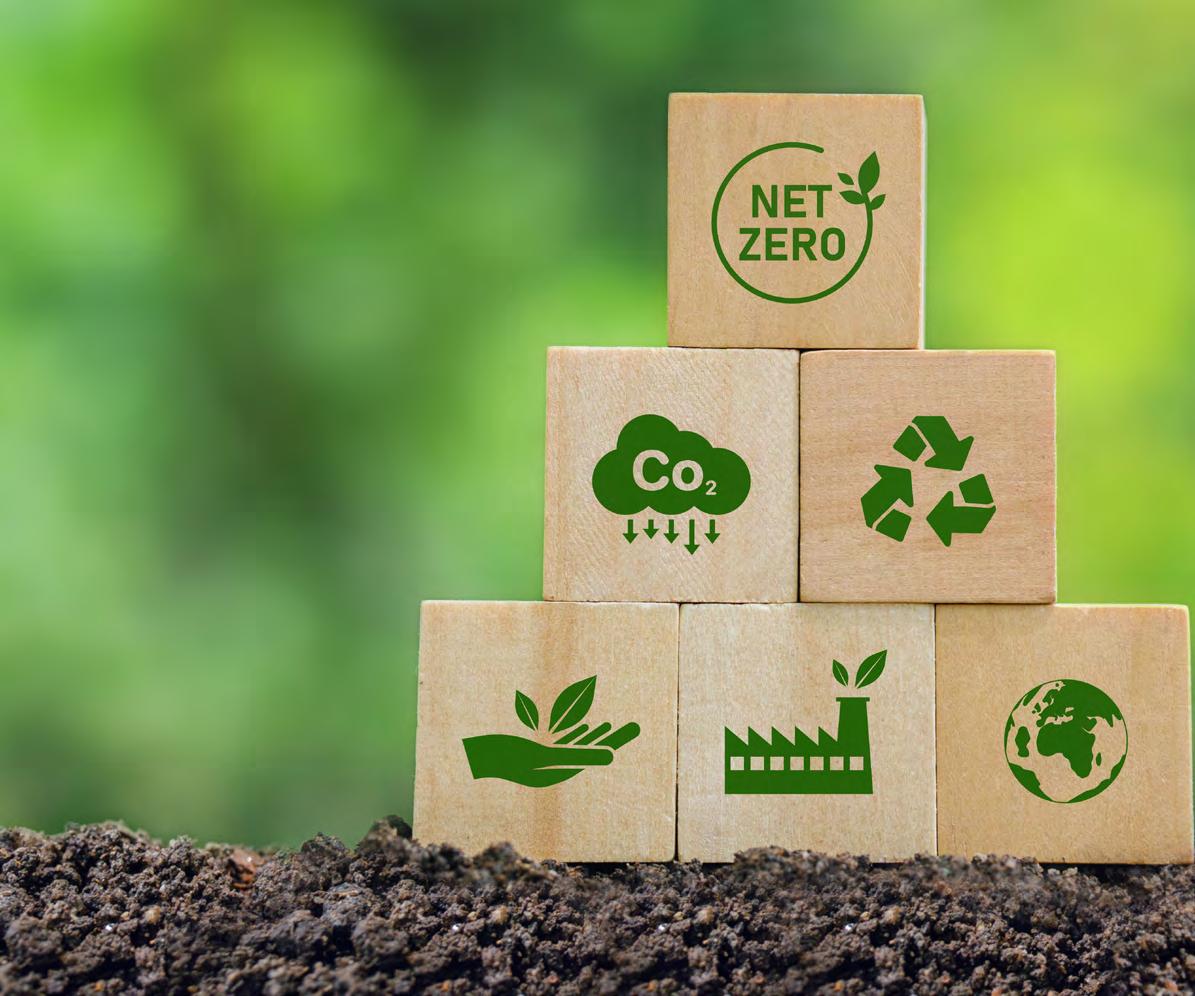

• To demonstrate evolution by not only identifying specific changes that have taken place, but also their timing.
• Doctoral education and training are time-consuming and expensive processes, hence the need for policy makers and funding organisations to be aware of the return on this investment.

• South Africa needs a research database from which national graduate samples and data on the journey from university to employment can be extracted.

• SANEDI and the DMRE need relevant and accurate information to develop and implement appropriate priorities to the benefit of the country.
